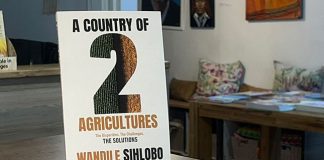The Competition Tribunal’s rejection of the proposed deal whereby US-based multi-national Pioneer Hi-Bred would have acquired a controlling interest in South African company Pannar Seed is yet another unfavourable outcome for South Africa.
Although the official reasons for the tribunal’s decision are still pending, early indications are worrying.
Competition
The tribunal heard that the proposed merger would leave South Africa with only two significant seed companies, thereby restricting competition. This is an invalid assumption and an oversimplification.
In July 2011, Grain SA provided guidelines to producers for making seed purchase decisions. These emphasised that competition in the seed industry was based not simply on seed prices per hectare, but on a host of factors.
To claim, as the tribunal did, that the merger would see only two companies owning 74% of the genetically modified (GM) white maize varieties and 86% of the GM yellow maize varieties is not a reliable indication of the level of competition in the industry.
The following figures provided by Grain SA demonstrate the value of competitiveness in no uncertain terms. The average 80 000-kernel unit price of Pioneer’s white maize cultivars (the 80DP) for 2011 is R1 804 (8,8% higher than the previous year).
The average price for 2011 of Pannar’s white maize cultivar of comparable kernel size is R1 578 (7,6% more than the previous year). For Monsanto, only a single cultivar is listed at R1 747 (5,9% more than the previous year). K2 Agri’s average price for white maize remained unchanged at R1 343.
In the case of GM white maize cultivars, the companies’ average seed prices, with year-on-year variance in brackets, are: Pioneer R2 228 (5,1%), Pannar R2 231 (2,9%), Monsanto R2 395 (5,5%) and K2 Agri R1 861 (0%).
A range of factors
These variations indicate that price is determined by several factors. And a producer’s seed choice is, in turn, influenced by more than just price: Cost savings, yield and resistance all play a role.
Also important are the handling of the seed, production conditions and other factors that influence the nett income per hectare. In this context, technological innovation backed by research is crucial.
The contention that emerging farmers’ price sensitivity makes them particularly vulnerable to such a merger should also be disregarded, given that there would still be adequate seed choices for them in the marketplace.
There is also evidence that small-scale producers in SA and internationally are willing to adopt new technology. Grain SA offers conclusive evidence of a positive correlation between technology and prices.
The better the genetics (the result of research and development), the higher the cost of the seed.
Price is derived from supply and demand. Usually there’s too little new seed (with the new trait or agronomic characteristic) available to meet the demand, and so prices are higher.
Producers who buy such seed do so with the expectation that it will contribute sufficiently towards nett income to offset its higher cost.
In this context, the size or sophistication of the farm is inconsequential. Productivity increase through genetic improvement, like better farming methods and entrepreneurship, is colour-blind and size-insensitive.
The research and development necessary to place South Africa at the forefront of food production is expensive and not readily affordable. If the merger had been approved, South Africa would have taken a quantum leap towards sustainable food security, but with a reasonable expectation of profits for farmers.
With the declining exchange rate at farm level, the only real alternative is increased productivity. South Africa has lost an opportunity to act as the gateway to technology revival on the continent. If the merger is approved after all and the majority of GM seed is produced by two large companies, it’s wrong to deduce that competition will lessen.
In fact, the actions of these companies on a reduced playing field would have to be more visible and competitive. There are only two teams in the Rugby World Cup final, but it’s the participation of many other teams that places the two best in the final.
The rejection of the merger is a loss for everyone in the market and will result in less competition between the larger companies.
The views expressed in our weekly opinion piece do not necessarily reflect those of Farmer’s Weekly.












